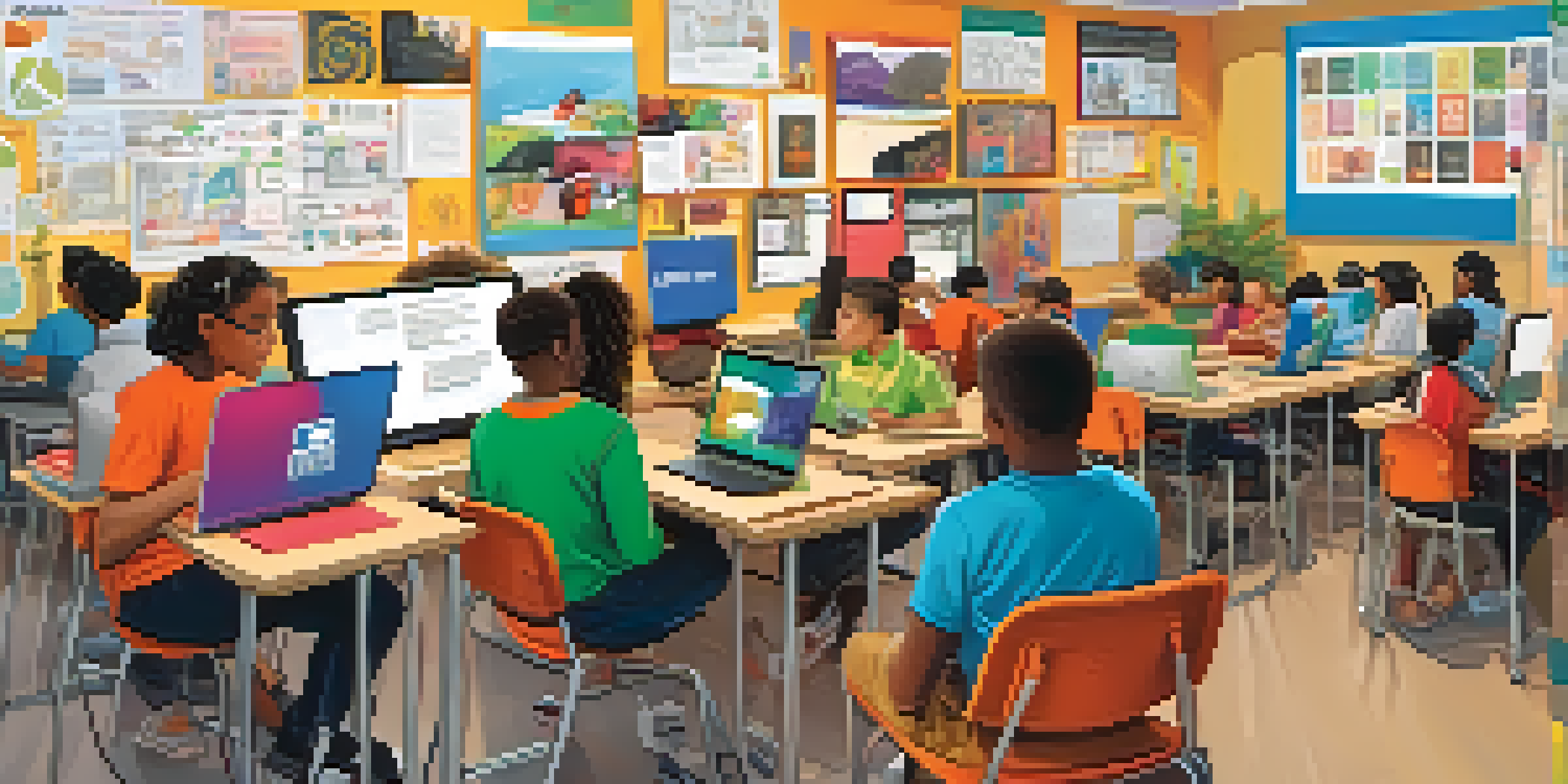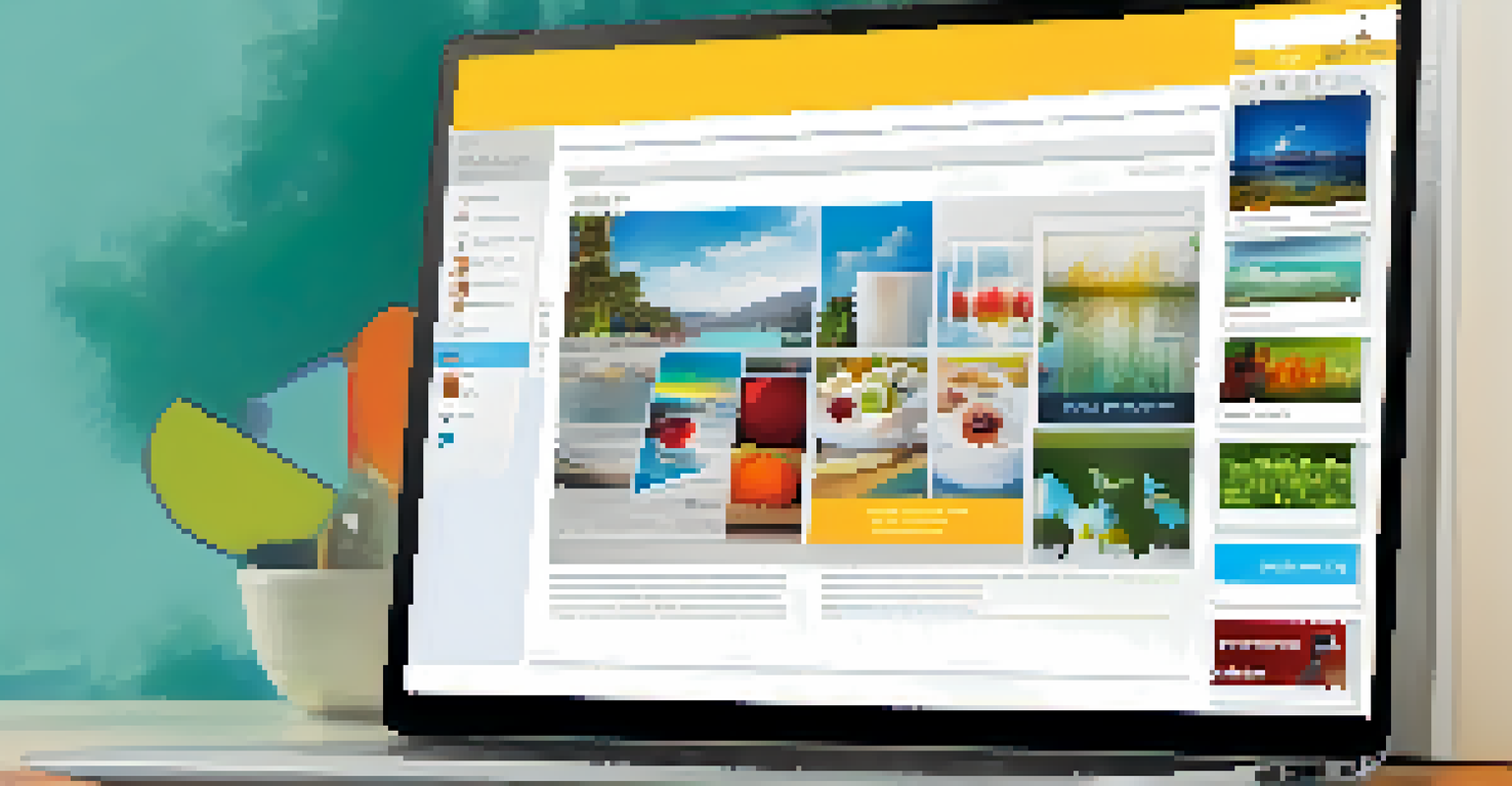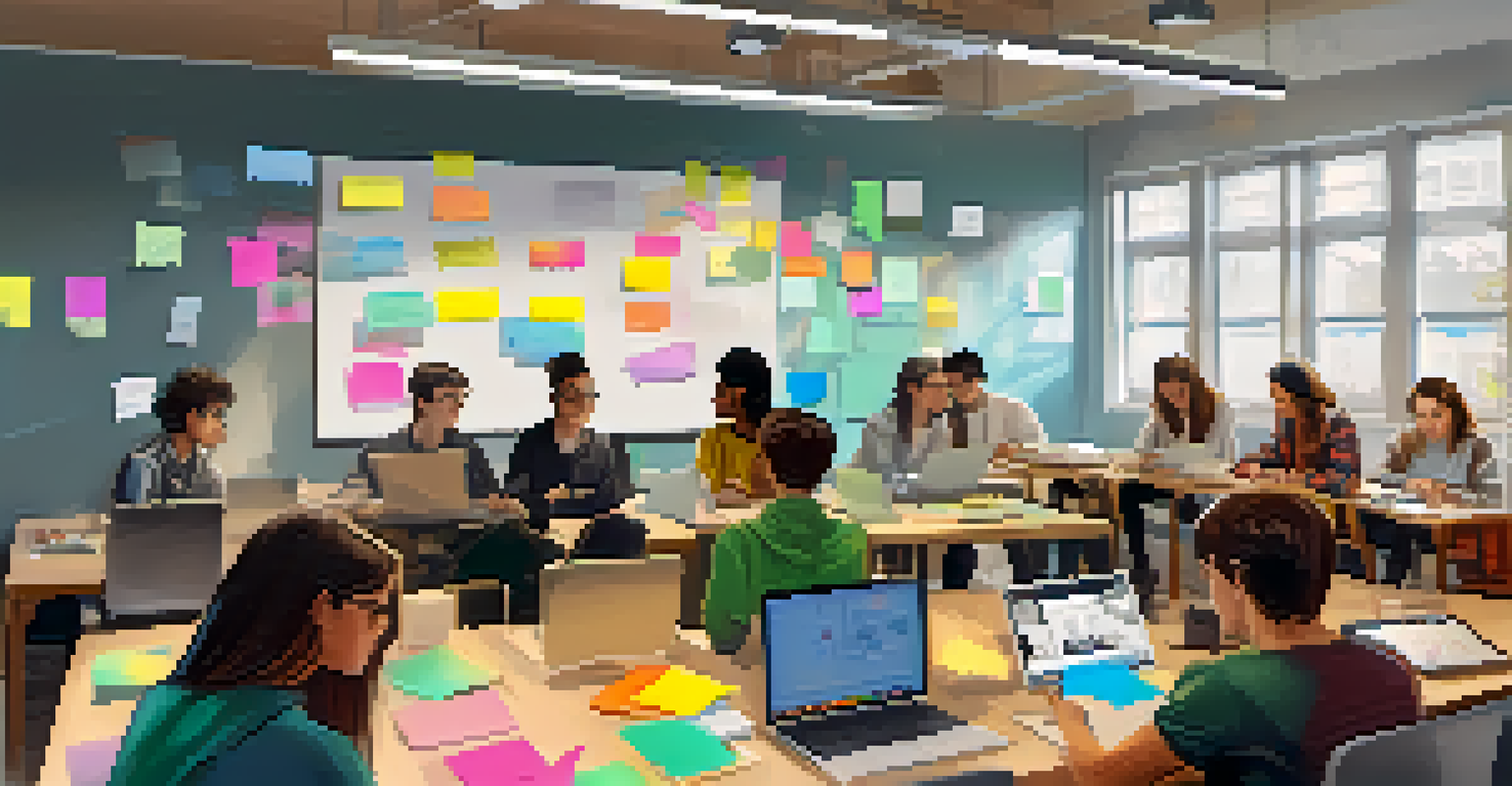Adapting Digital Portfolios for Diverse Learning Needs

Understanding the Importance of Digital Portfolios
Digital portfolios are powerful tools that showcase a learner's skills and achievements. They provide a platform for students to reflect on their growth and curate their work in a meaningful way. By adapting these portfolios to meet diverse learning needs, educators can enhance engagement and ensure inclusivity.
The greatest sign of success for a teacher is to be able to say, 'The children are now working as if I did not exist.'
For instance, a student with a visual impairment may benefit from audio descriptions of their work, while another student might prefer a more visual layout. By recognizing these differences, teachers can create a more personalized learning experience. This not only boosts confidence but also promotes ownership of the learning process.
Ultimately, understanding the value of digital portfolios is the first step in making them accessible. When we prioritize individual learning needs, we create an environment where every student can thrive and express themselves authentically.
Identifying Diverse Learning Needs in Students
Every student comes to the classroom with unique strengths and challenges. Some may have learning disabilities, while others might excel in particular subjects but struggle in others. To effectively adapt digital portfolios, it's crucial to identify these diverse learning needs through observation and assessment.

Engaging with students during this identification process can provide valuable insights. For example, asking them how they learn best or what tools they find most helpful can guide educators in making appropriate adjustments. This collaborative approach fosters a sense of belonging and encourages students to take an active role in their education.
Digital Portfolios Enhance Learning
Digital portfolios allow students to showcase their skills and reflect on their growth, fostering a personalized learning experience.
By recognizing and understanding the variety of learning styles and needs, educators can tailor digital portfolios that cater to each student. This ensures that all learners have the opportunity to showcase their talents and achievements in ways that resonate with them.
Incorporating Technology for Enhanced Accessibility
Leveraging technology is essential in adapting digital portfolios for diverse learners. Various tools and software can support different learning needs, making it easier for students to express their individuality. For example, platforms that allow for multimedia content can be particularly beneficial for students who prefer visual or auditory learning.
Education is not the filling of a pail, but the lighting of a fire.
Consider tools like Google Slides or Padlet, which allow students to create dynamic presentations with mixed media. These platforms can accommodate text, images, audio, and video, providing multiple avenues for expression. This flexibility not only engages students but also caters to their preferred learning modalities.
Incorporating technology thoughtfully can transform the digital portfolio experience. By selecting the right tools, educators can ensure that every student has the means to present their work in a way that highlights their unique strengths.
Designing User-Friendly Digital Portfolios
A user-friendly design is crucial for making digital portfolios accessible to all students. Clear navigation and intuitive layouts can significantly enhance the user experience. When students can easily find and organize their work, they are more likely to take ownership of their portfolios.
Incorporating visual aids like icons or color-coded sections can help students with learning disabilities quickly identify different areas of their portfolio. For example, using a specific color for written work and another for multimedia projects creates an organized and visually appealing layout. This simple design choice can make a world of difference.
Technology Supports Diverse Needs
Incorporating various technology tools helps accommodate different learning preferences, making digital portfolios more accessible.
Ultimately, a well-designed digital portfolio should prioritize clarity and ease of use. By taking the time to create a user-friendly interface, educators can empower students to engage with their portfolios confidently and creatively.
Encouraging Reflection and Personal Growth
Digital portfolios should not just be a collection of work; they should encourage reflection and personal growth. By incorporating prompts for self-assessment, educators can guide students to think critically about their learning journeys. This reflective practice enables students to identify their strengths and areas for improvement.
For example, asking students to write a brief reflection on each project can deepen their understanding of their learning process. This practice fosters a growth mindset, where students learn to view challenges as opportunities for development rather than obstacles. Over time, this mindset can lead to increased resilience and motivation.
Encouraging reflection within digital portfolios can transform them into powerful tools for personal growth. As students engage with their work on a deeper level, they gain valuable insights into their learning styles, preferences, and aspirations.
Collaborative Approaches to Portfolio Development
Collaboration is key when it comes to developing effective digital portfolios. Encouraging peer feedback and group projects can enrich the portfolio experience for all students. This not only fosters teamwork but also allows students to learn from one another's perspectives and skills.
For instance, students can collaborate on a joint digital project where they each contribute their unique strengths. This shared experience can help students appreciate diverse learning styles while enhancing their own portfolios. Furthermore, incorporating peer reviews encourages critical thinking and constructive feedback.
Collaboration Enriches Portfolio Growth
Encouraging teamwork and peer feedback in portfolio development cultivates essential skills and enhances the overall learning experience.
By promoting collaboration, educators can create a vibrant learning community. This not only benefits the development of digital portfolios but also cultivates essential skills such as communication, empathy, and adaptability.
Evaluating and Updating Digital Portfolios Regularly
Regular evaluation and updates are essential for keeping digital portfolios relevant and effective. Students should be encouraged to revisit their portfolios periodically, assessing their progress and making necessary adjustments. This practice fosters a sense of accountability and encourages continuous improvement.
For example, setting specific intervals for portfolio reviews allows students to reflect on their learning and set new goals. This process can help them stay motivated and focused on their personal growth. Additionally, it enables educators to identify trends in student performance and adjust their teaching strategies accordingly.

Ultimately, regular evaluation ensures that digital portfolios remain dynamic and meaningful. By encouraging students to take an active role in this process, educators can empower them to grow and evolve in their learning journeys.